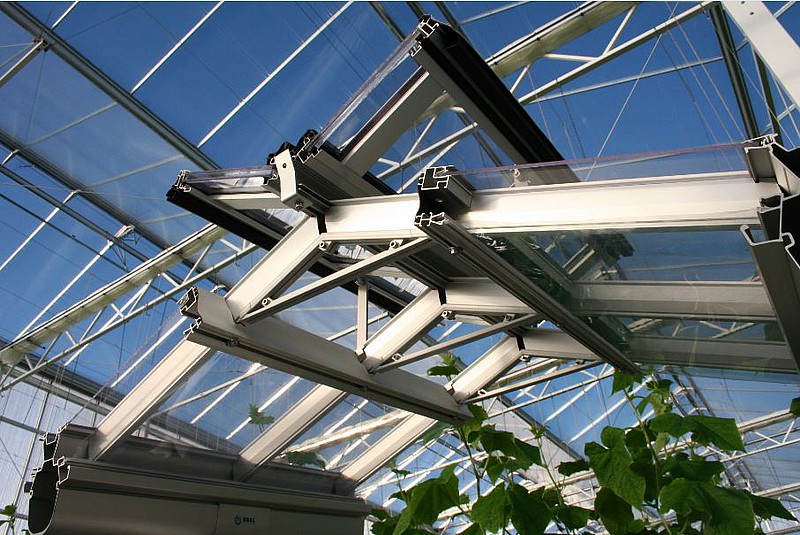“An insulating greenhouse covering is commonly used in the warm pot plant cultivation, but is rare in vegetable cultivation. This is understandable given past experiences. An additional glass layer naturally intercepts more light. In addition, an insulating greenhouse covering is an additional investment, and with a low price for heating, it is not a commercially viable idea. Aside from these hard facts, many people were convinced that the indoor climate under such an insulating greenhouse covering would have inhibited growth.

Technology continues to advance, however, and the horticultural company environment keeps changing. Glass has become more transparent in the past few years, giving an insulating greenhouse covering almost the same light transmission as a single-glass greenhouse covering did before. And in a social climate where energy savings and insulation are important themes, nurserymen who actively improve their greenhouse insulation are looked on with approval.
In the project “Monitoring energy savings and cultivation experiences with technical systems for Next Generation Growing”, two companies using insulation glass are followed. Both companies noted in the trials of the IDC-energie in Bleiswijk that a perfectly good crop can be grown under such an insulating greenhouse covering. If carefully managed, the crop is not disadvantaged by the moister climate, and the energy savings are substantial. Of course, data on savings are always a point of comparison used to evaluate the new system. At both monitoring companies the comparison is made with adjacent departments in the same company. The results showed that the insulating greenhouse covering realised 20-25% in savings. This interesting result is very much in line with the sustainability objectives of these companies.
The cost price of double glass remains an issue for vegetable cultivation. That is why the consortium of VDH Foliekassen, Van der Valk Systemen, Boal Systemen and AGC plastics developed a new double-layer glass covering, consisting of a combination of glass and film. This greenhouse has been christened the 2SaveEnergy greenhouse. The covering system is comparable to that of a single-covering greenhouse, but during the last step in the construction process, a high-quality film is drawn underneath the glazing bars. This gives the greenhouse a double covering, and the thermal bridge between the greenhouse air and the outdoors is breached by the glazing bar. The film extends from gable end to gable end, so a continuous ridge ventilation is added to the greenhouse as a ventilation system.
The 2SaveEnergy greenhouse has the same light transmission as a standard single-glass greenhouse and even performs better in terms of energy savings than the insulating coverings being followed in the monitoring project, but this is due to the fact that in the IDC-energie we are approaching the limit of the permissible humidity control. The low energy consumption derives not only from the double greenhouse covering, the double screen also contributes. This special screen is placed in a simple mechanism.
The crop growth in the 2SaveEnergy greenhouse is doing well, as it is in other greenhouses with insulating greenhouse coverings being followed in the monitoring project. We can therefore state that the improvements in the material technology and the knowledge and experience obtained by the growers regarding an effective humidity control make it possible to reduce substantially the demand for heating of greenhouses in the Netherlands.”
